As someone who makes a living growing and distributing aquarium corals, I am always on the lookout for exciting new varieties. Among the myriad groups of corals, Zoanthids are always among the most popular. It was with this mentality that I accidentally introduced Palythoa toxica into several grow-out systems. They were cute at first coming mixed with other Zoanthids but quickly overran multiple systems to the point where other corals could not grow.
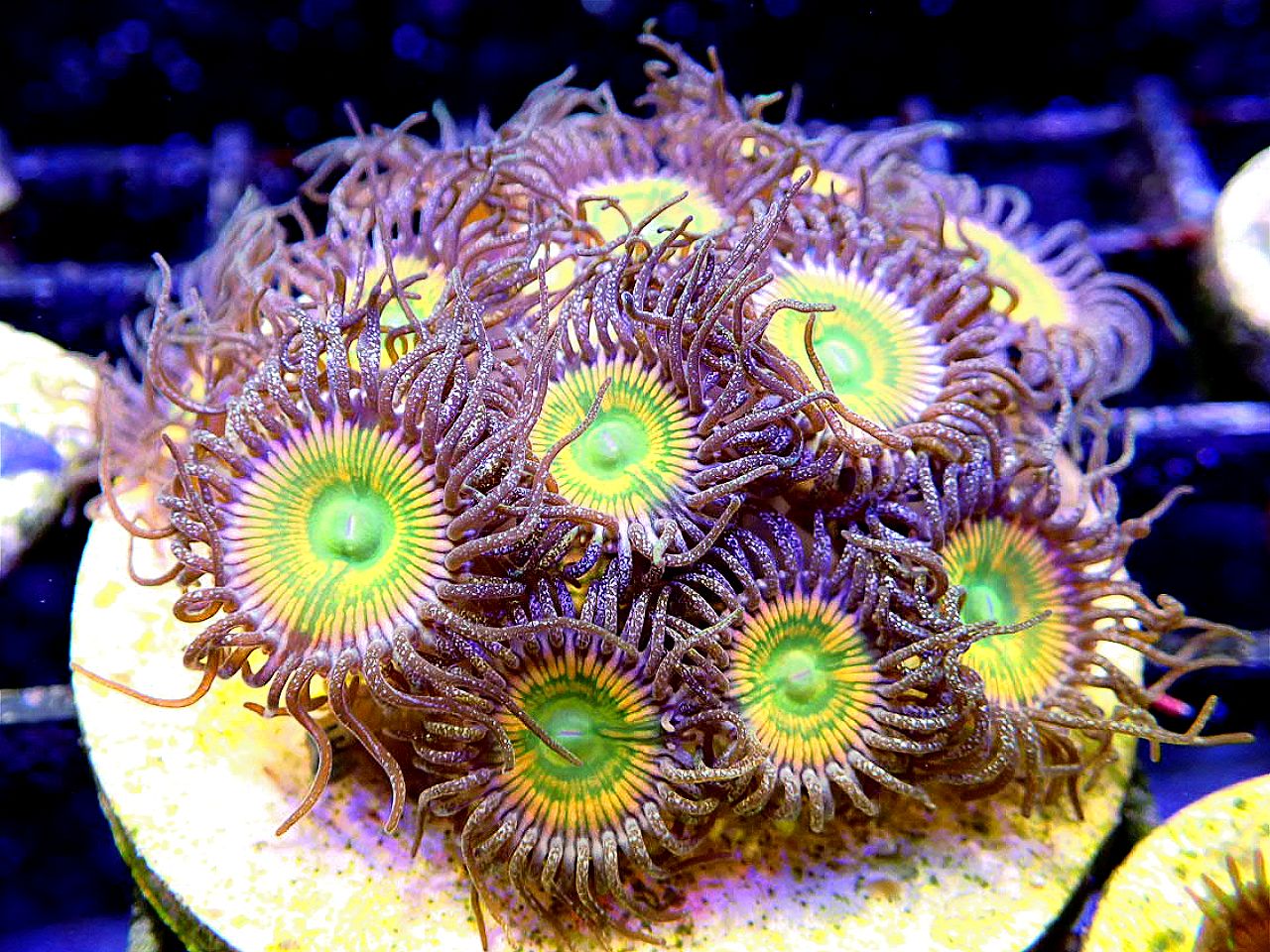
What’s the big deal with Zoanthids Anyway?
The big deal is Zoanthids are darn close to the perfect aquarium coral. Once established, they are hardy, grow rapidly, and come in a never-ending combination of colors. The big downside is that a few species produce an extremely potent toxin, aptly named Palytoxin. This is a highly dangerous and potentially life-threatening toxin.
The most dangerous species are from the genera Palythoa and Protopalythoa and are sold under the names: Button Polyp, Sand Polyp, Cinamon Polyp, Sun Polyp, Sea Mat, Paly, Palythoa, and more. To make matters more confusing, species are often misidentified, even by advanced aquarists, pet stores, and others who should be in the know.
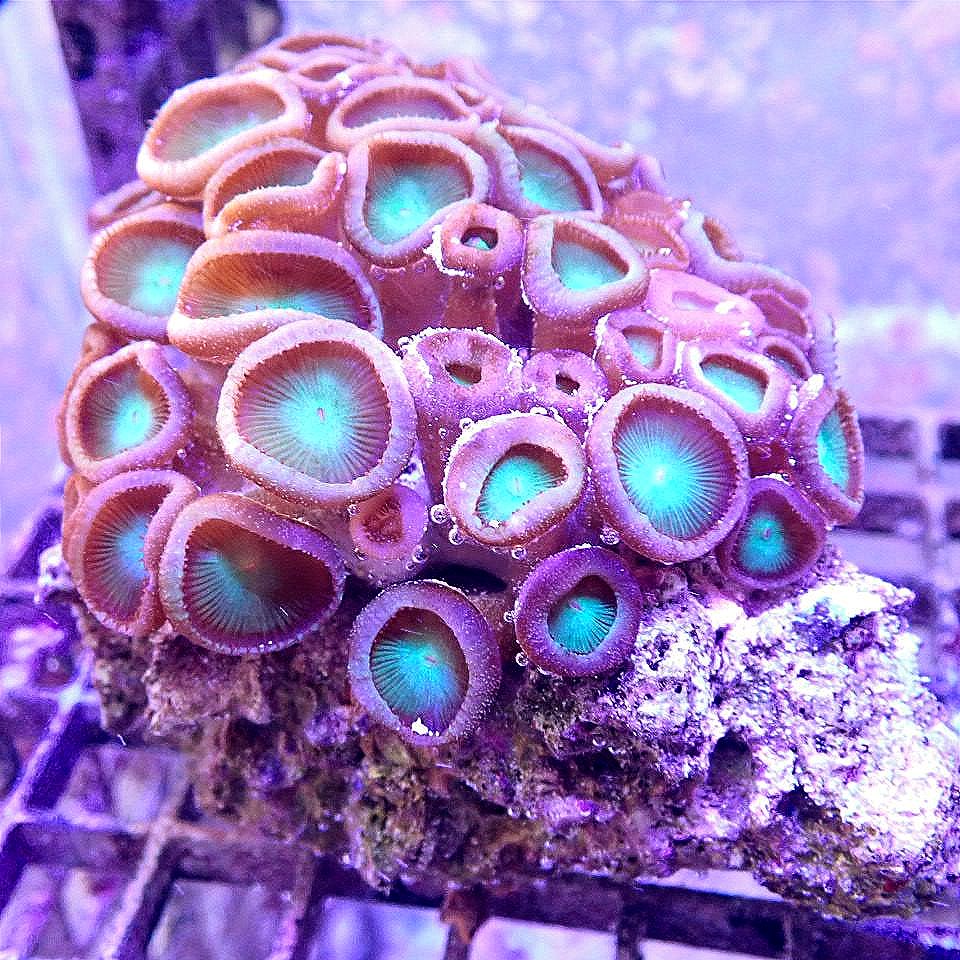
These corals can be introduced to aquariums either intentionally as they are commonly collected and sold in pet stores or unintentionally as hitchhikers. Once in your aquarium, they have the same prolific nature as other desirable Zoanthids, spreading over rockwork, sand, and aquarium walls at a rapid rate. Eradication can be extremely difficult as precautions must be taken to ensure safe removal.
Palythoa Identification
The good news is that identification is relatively simple. Smaller, colorful species of Zoanthid are rarely dangerous. Adult Palythoa and Protopalythoa will typically have larger oral discs at least 3/8th of an inch, some much larger. Many species in the Palythoa Genus, including P. toxica and P. mutaki, have a long stalk developing into a large oral disc.
Other species such as Palythoa caribaeorum do not have large stalks and grow with their individual polyps connected by a mat of tissue, this is where they get the common name “Sea Mat.”
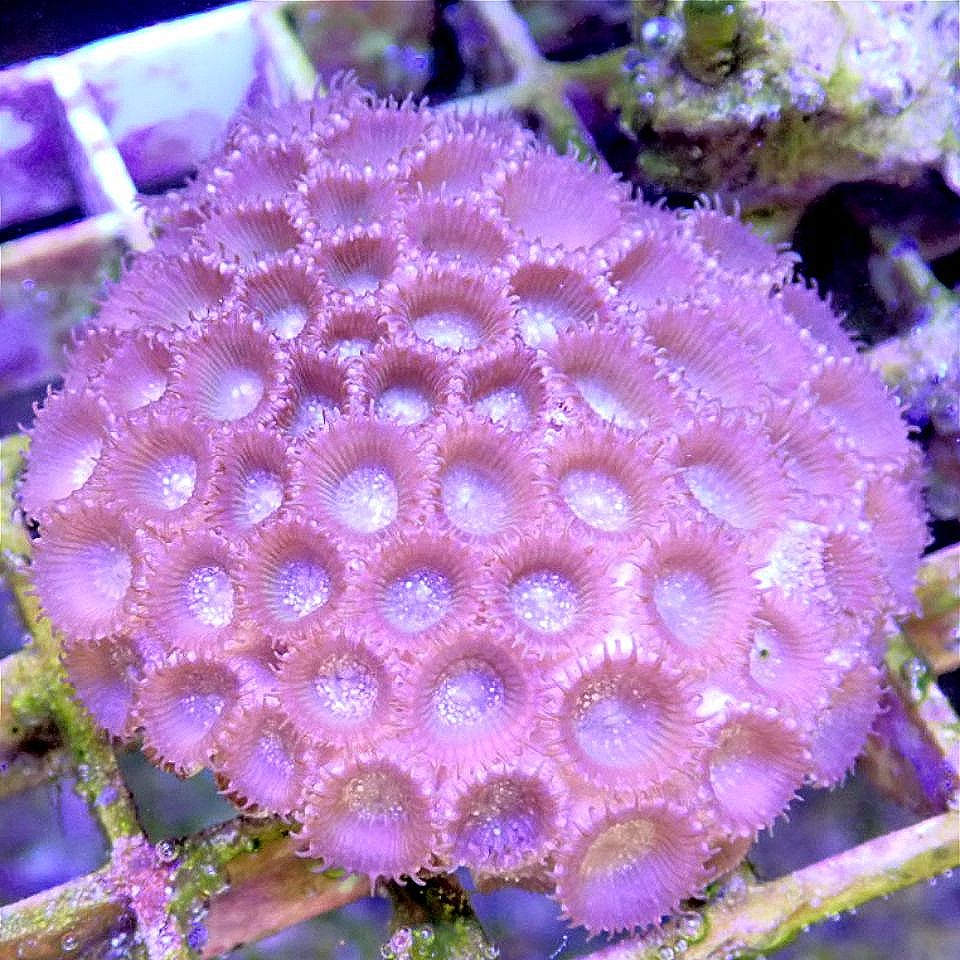
Color and pattern can help with identification as well. If the Polyps are large, unconnected with a long stalk, and a dark brown to army green color, then you likely have one of the very potent species in the Palythoa genus. These include Palythoa toxica, mutaki, heliodiscus, and more.
If the polyps are quite large – one to two inches – protrude from a long stalk and come in colors of green to cinnamon brown, you are likely looking at Protopalythoa grandis.
If polyps are connected by a mat of tissue and lay low to the substrate and only open partway, you are likely looking at Palythoa caribaeorum or Palythoa tuberculosa.
Other common varieties of Palythoa include Texas Trash Paly, Neon Green Button Polyps, Purple Death, and more.
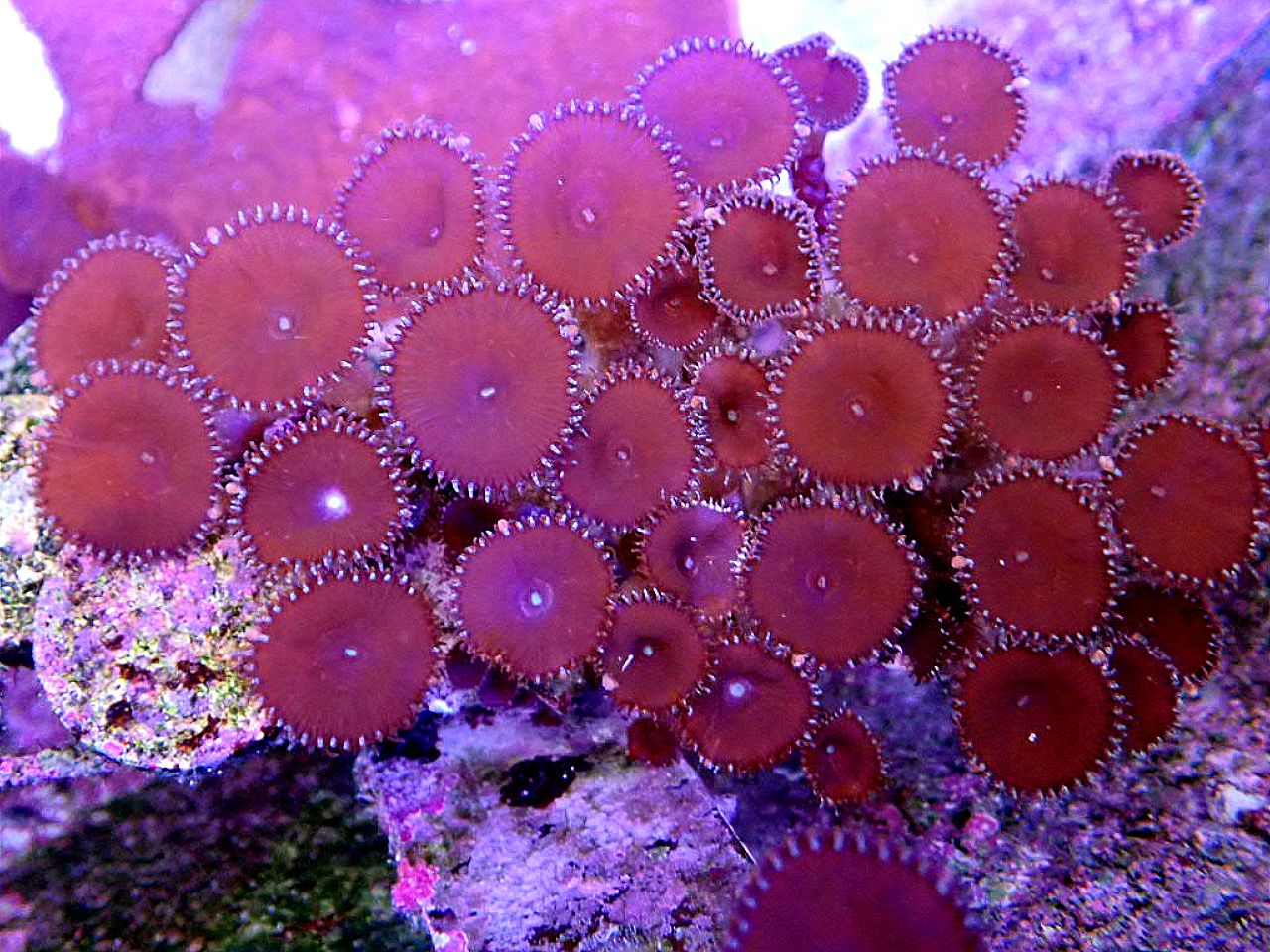
Identification can be hard from descriptions alone, the photos in this article and a quick Google search will help you identify down at least to the genus level. At the end of the day erring on the side of caution is always wise. If in doubt assume it is dangerous.
Palythoa Misidentification
To make things more confusing, there are many corals in the genus Zoanthus that are referred to as “Palythoa” or “Palys” in the trade. This misidentification comes from the over-generalization that Zoanthids have small polyps and Palythoa have large polyps. Many species in the Zoanthus genus can grow large such as Zoanthus gigantus.
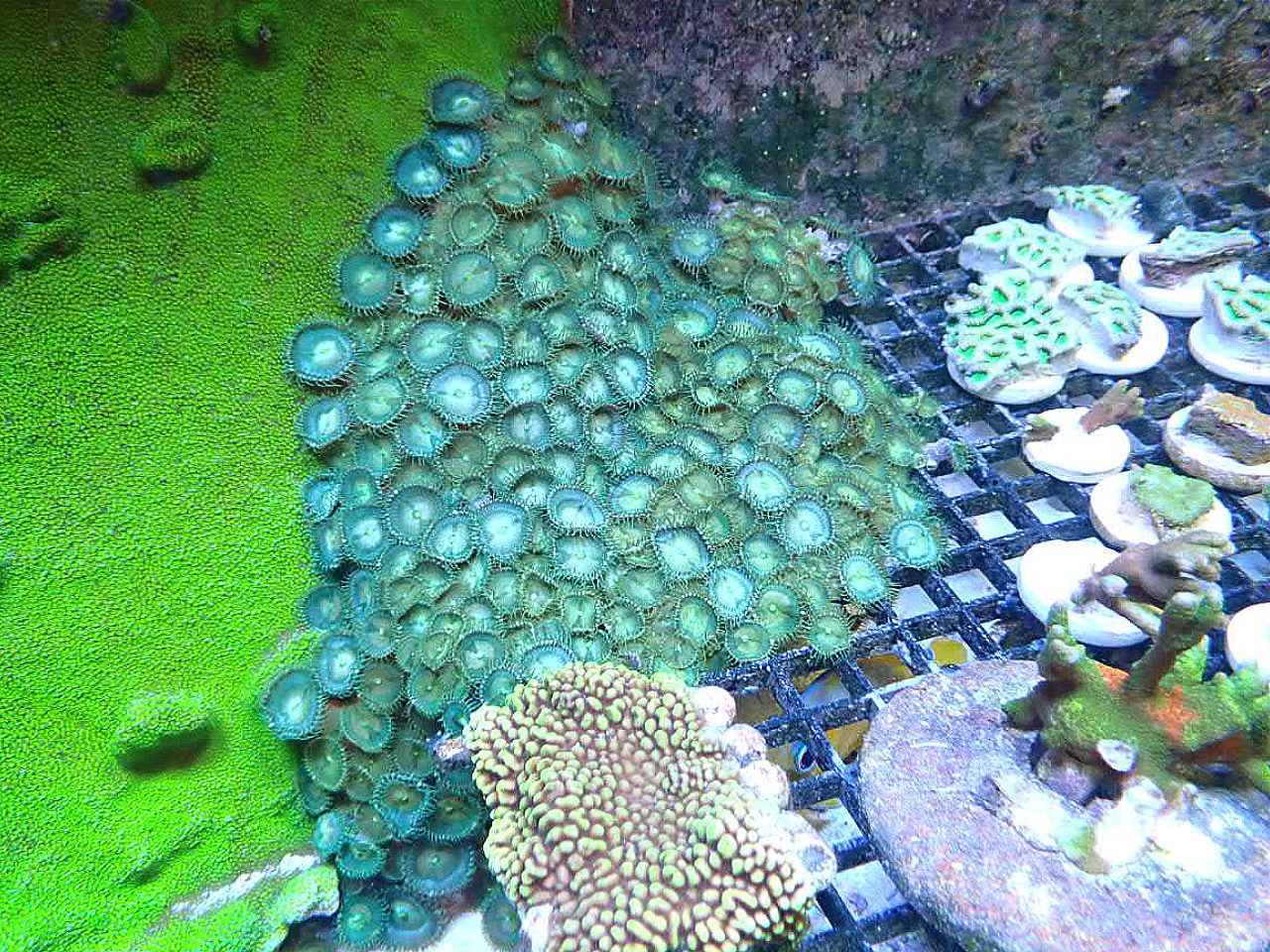
Species that are less likely to be dangerous are the true Zoanthids such as Zoanthus sociatus, vietnamensis, gigantus and more. These are typically smaller and brightly colored. Again, if in doubt double-check with online photos or ask an experienced aquarist. With time you will become an expert at knowing the difference.
How to Keep Yourself and Others Safe from Palytoxin
Before handling or eradicating any Palythoa species, safety and equipment must be addressed. The toxins produced are harmful through any means that allows them to get inside your body. Eyes, mouth, and open cuts are all common routes of entry, therefore these must be properly protected before working with Palythoa.
Palytoxin can also spread through aerosolization, where toxic particles become airborne and are breathed in. This can happen through processes such as pressure washing aquariums and rocks, boiling aquarium rocks and decorations, burning of Palythoa polyps, as with a blow torch, and even through over aeration of the aquarium as with partially emerged powerheads.
With this knowledge, it is imperative to use proper safety gear including a full-face mask, that covers the mouth, nose, and eyes (with carbon filters), shoulder-length gloves, and if necessary, as with large infestations, a hazmat suit (Yes, I’m serious). Covering any open wounds, large or small is also imperative. Palythoa corals are dangerous and have put aquarists in the hospital and even killed on rare occasions. Don’t be the next statistic!
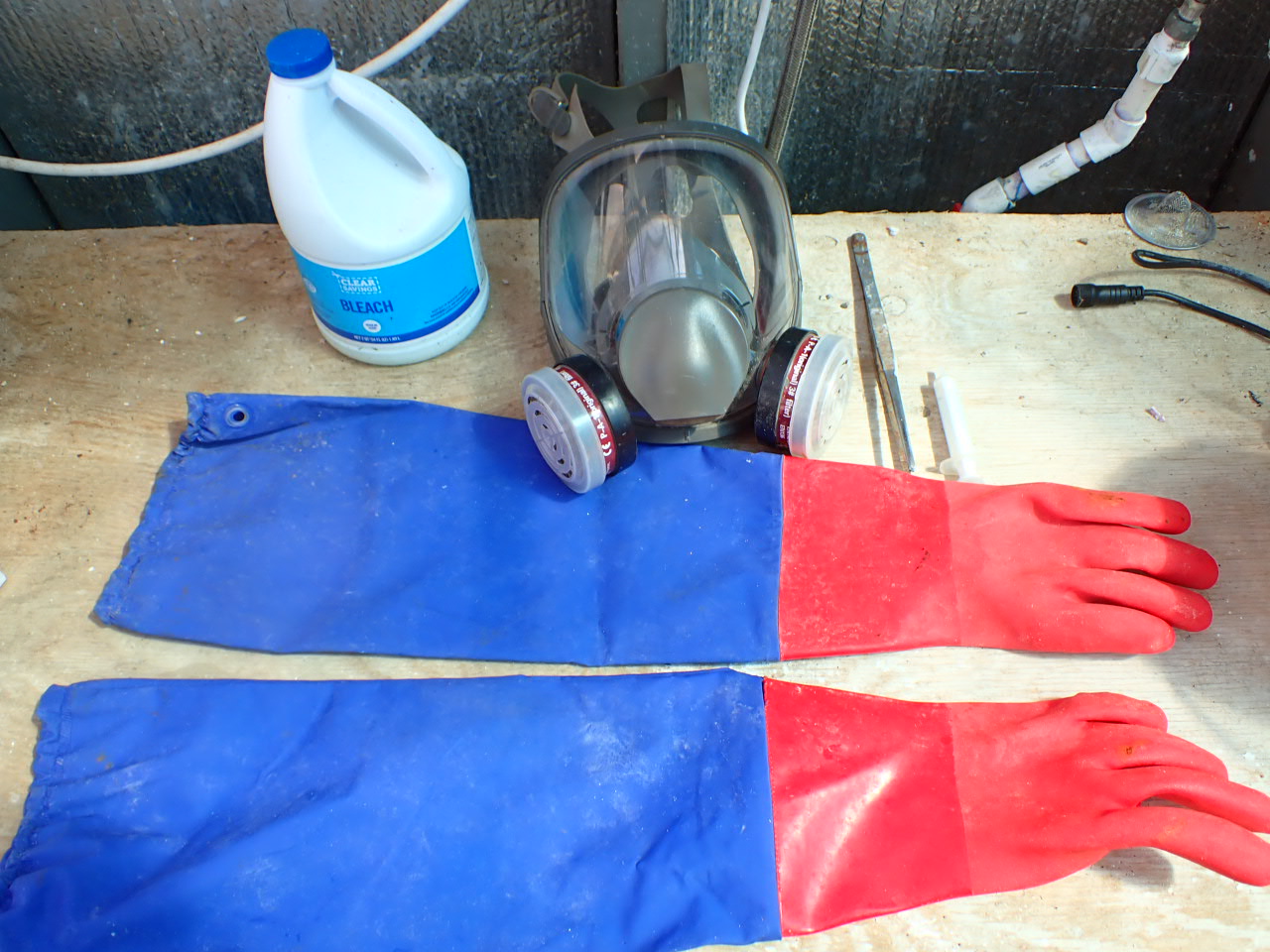
How to eradicate Palthoa from a reef tank
Let’s get the nitty-gritty out of the way – full-blown Palythoa infestations are time-consuming and can be difficult to eradicate. With that said, I will describe methods that I have used to clear Palythoa from large grow-out tubs. Hopefully, these tips will prove useful for you.
First, bleach is your friend. Palytoxin can be neutralized by soaking affected rocks and materials for half an hour in a bleach solution of one part household bleach to 10 parts water. This can be done in a separate vessel or in the tank itself if a teardown is required. Make sure to use a fresh bottle as bleach becomes less potent with extended storage.
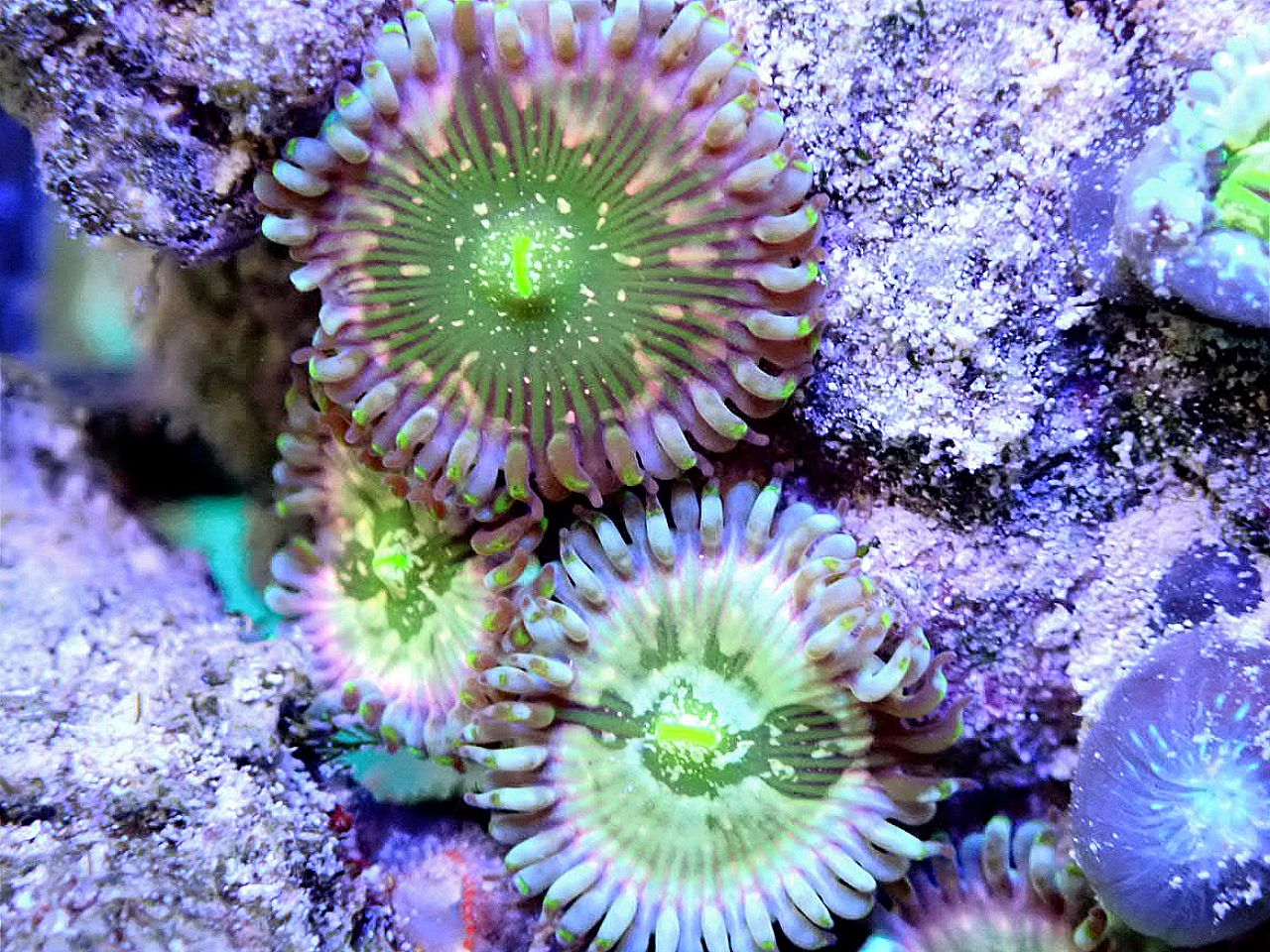
Your second friend is carbon as it is proven to successfully adsorb palytoxin. Before starting any eradication attempt make sure to have both bleach and carbon on hand.
Small clusters of Palythoa polyps are relatively straightforward to deal with, as they can be killed in the tank or removed and soaked in a bleach solution. When Killing polyps in a reef tank it is important to:
- Put in as large a quantity of fresh carbon as possible to help soak up any toxins.
- Wear proper safety equipment for yourself and anyone else in your house. Better yet do this when no one else is home and keep all doors and windows open. There are cases of entire households getting sick from these corals.
- Only kill small clusters at a time, at most 1 polyp for every 20 gallons per day. Starting by killing only a few and monitoring your fish and corals for adverse reactions is advised (some corals aren’t phased but others such as Montipora and Chalice corals display extremely negative reactions to palytoxin). For reference, in one of my 400-gallon grow-out tubs, if I killed more than 18 polyps in a day, I would have severe bleaching events in the system. I always kept it to less than 10 polyps per day.
Killing small colonies is easily accomplished by mixing up a kalkwasser slurry and with all water motion devices turned off, slathering the polyp with the paste, using a properly sized syringe. The highly alkaline solution will dissolve the polyps. After treatment add fresh carbon and do not put hands inside the aquarium for 24 hours as trace amounts of toxin can remain.
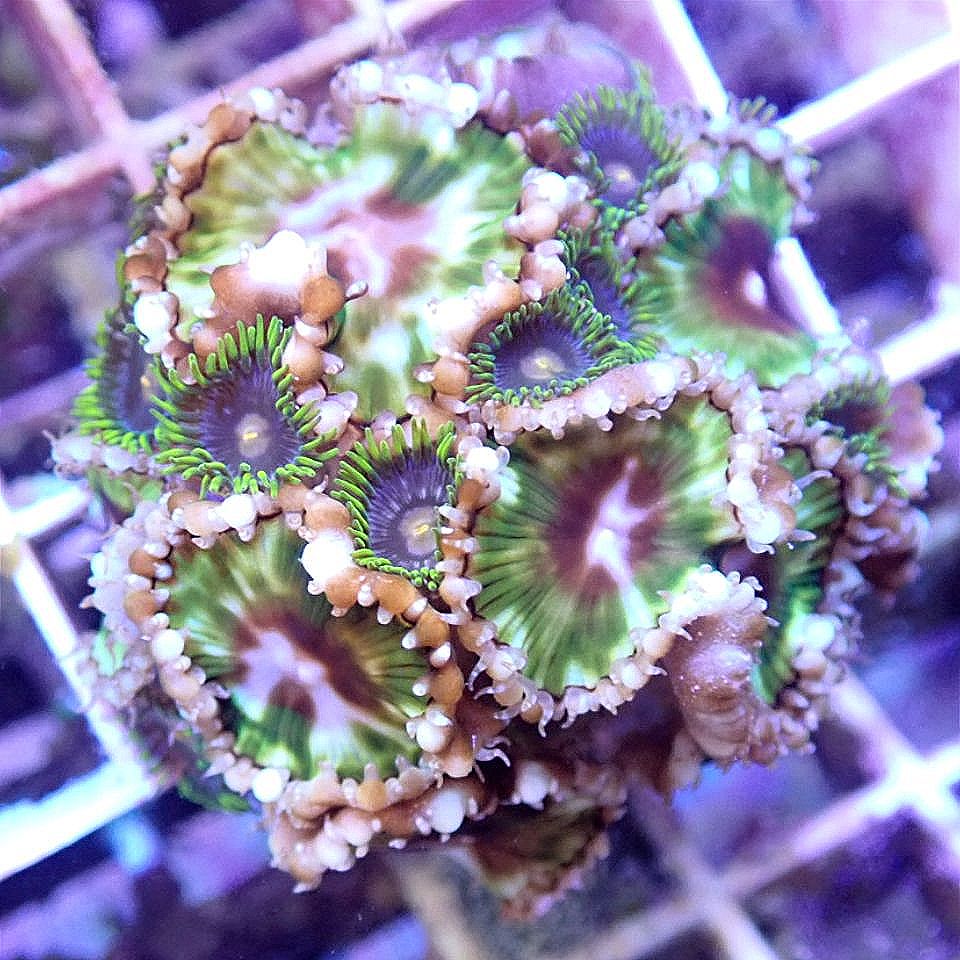
Alternately Small clusters can be picked off the rock one at a time with long tweezers or forceps. Again, don’t pluck too many at once for the risk of releasing toxins into the aquarium. When I do this, I keep a jar of bleach next to the aquarium and put each polyp straight into the jar, and then rinse the tweezers in a jar of fresh water to repeat the process.
For larger infestations, we need to come up with more invasive approaches as large colonies will grow faster than you can effectively destroy them. There are two main ways that I have found to accomplish this. The first is to use natural predators and the second is to manipulate the environment to kill them.
Finding predators is difficult as very few animals eat them, and none are exactly reef-safe. The easiest option is large Angelfish, however, even these are hit-and-miss. I have had success with Koran, Gray, and French Angels. I would assume others in the genus Pomocanthus and Holocanthus may work as well. These are large fish that shouldn’t be kept in small tanks and will likely munch on other corals. I have found Juveniles to be less interested in Palythoa, large adults are the way to go.

The next animal that I have found can be tough to source. Sundial Snails are natural predators of Zoanthids and Palythoa and sometimes hitchhike on wild Zoanthid colonies. I would suggest discussing the issue with your local aquarium store and asking them to save any snails that come in on wild corals. For large infestations, you will need several snails. Sundial Snails are not selective about which Zoanthids they eat and will just as happily eat your desirable species.
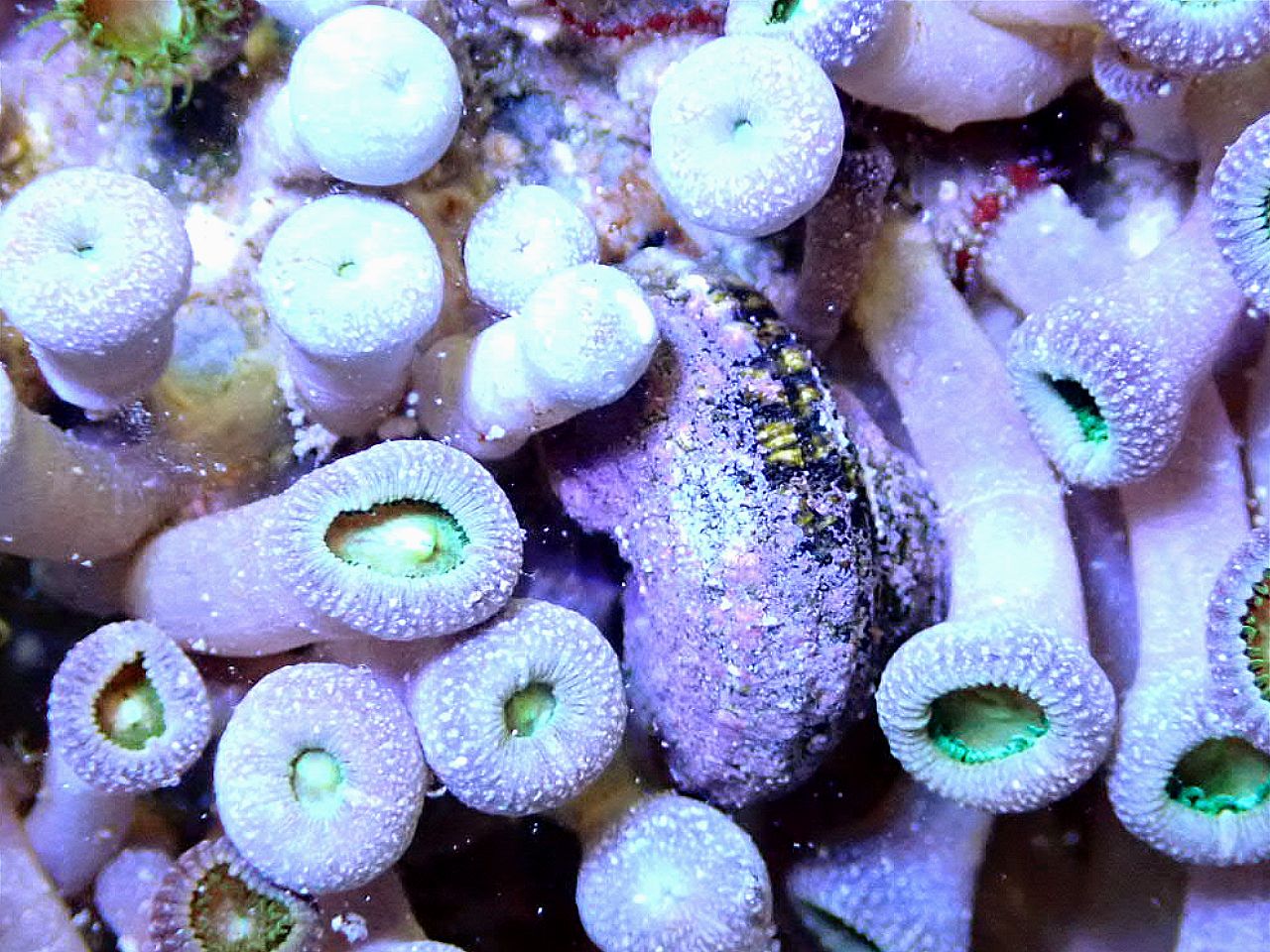
The last animal that I have found to eat Palythoa is quite difficult to source, you will have to be patient to find one. These are the Gaudy Clown Crabs from the Caribbean. When I tried to find these, I was told by the collector that he only finds 3-4 a year. Nevertheless, I was patient and when he found them, I was happy to pay the premium he requested. These animals did a good job, eating up to half a dozen polyps per week.
If natural predation is not feasible for your system, the next option and my preferred route is manipulation of the environment. Unfortunately, this will mean removing all other photosynthetic or invertebrate life from your display. Having a second aquarium, such as a frag tank will come in handy with this approach.
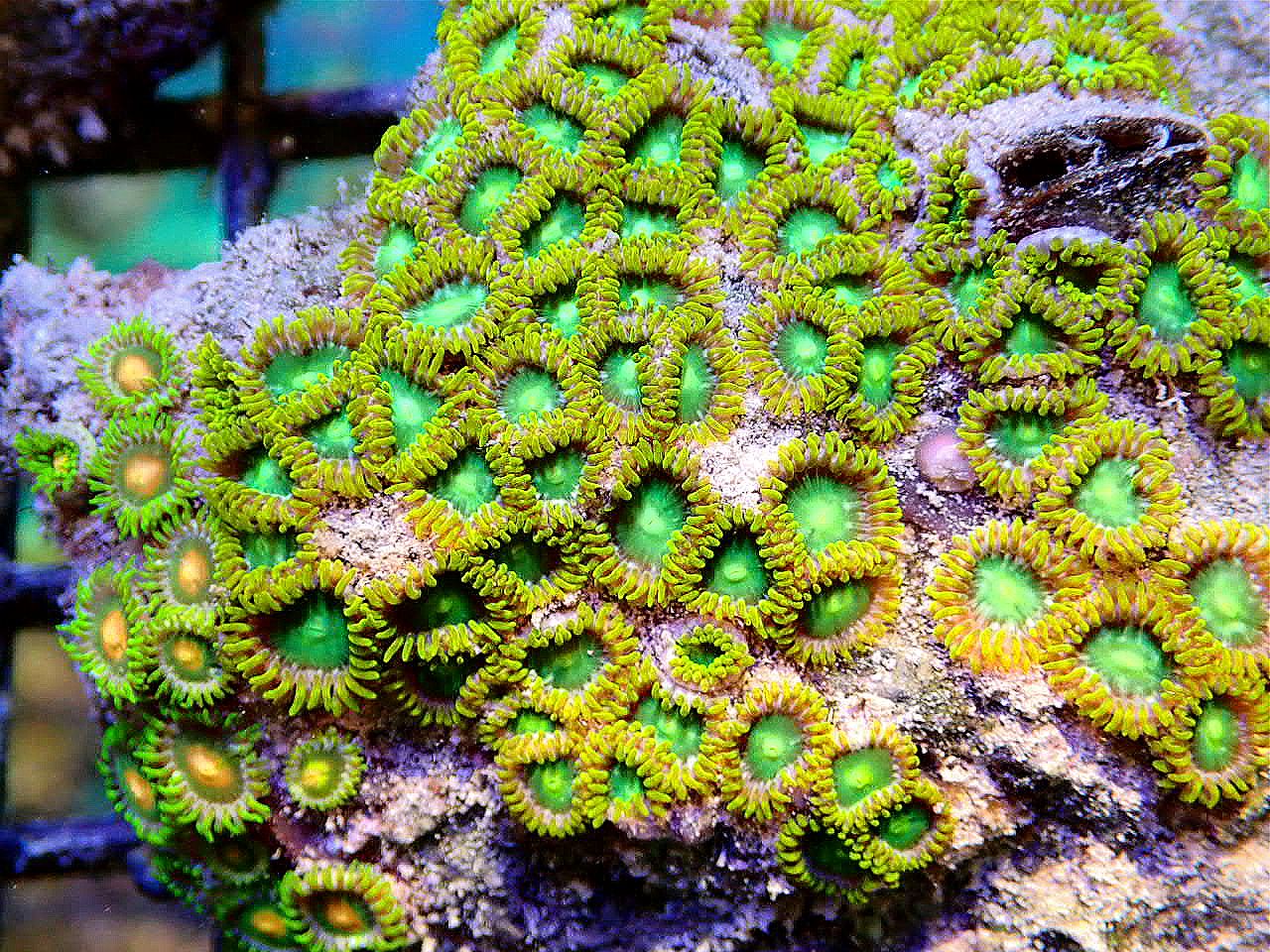
The two parameters that are easily tweaked to combat these critters are salt and light levels.
Palythoa can be killed by decreasing salt content to a specific gravity of 1.016 for an extended period. This will kill off most other invertebrates so inverts and coral will have to be removed. Keeping fish in the aquarium is fine. Lower the salinity slowly over the course of two weeks or more. The last thing you want is to stress the polyps to the point of a mass toxin release. Keep fresh carbon in your system for the duration of this treatment. Once the Palythoa disappear you can raise the salinity back to normal levels and reintroduce coral and inverts.
Killing Palythoa with light starvation is also a great way of removal and can be done as a whole tank treatment or a spot treatment. The easiest way is to remove all other photosynthetic life and turn off the lights. This will take a month or more to be successful. Again, keep fresh carbon in your system. The unique thing about this approach is it can also be accomplished as a spot treatment.
For example, I had a 3×2 foot wall completely covered in Palythoa. I deprived them of light by placing a large sheet of black ABS plastic at an angle against the wall, I used plastic clamps to hold the sheet in place. Placing the sheet at an angle allowed water to move through the area but blocked the light. I had to keep this sheet of plastic in the system for a full three months but afterward, the Palythoa were gone.
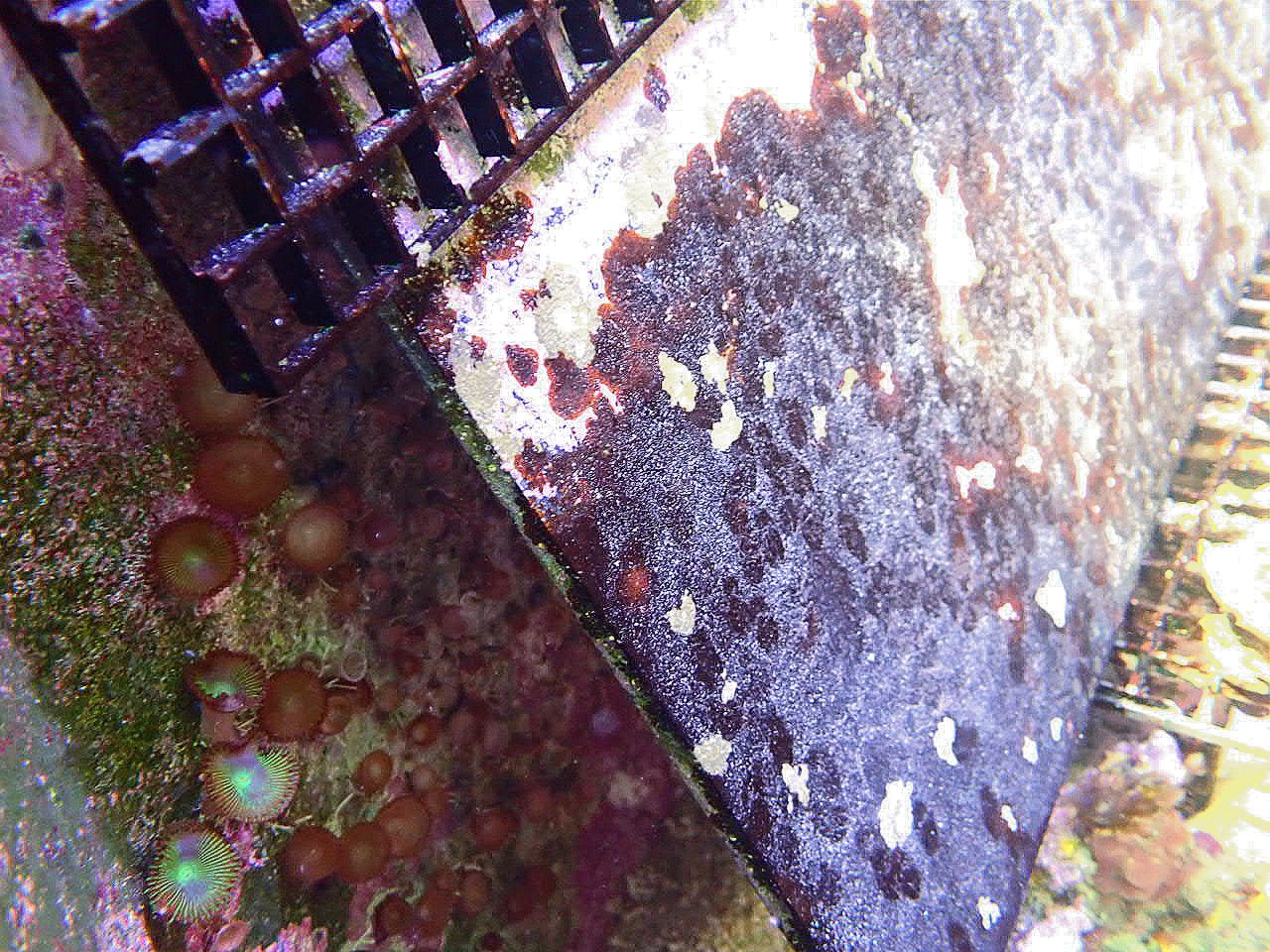
The Ethics of Palythoa disposal
The last topic that deserves discussion is the ethics surrounding dangerous species like Palythoa. While you could simply remove affected rocks and throw them in the trash. What happens down the line? Hopefully nothing, but what has inadvertently happened is the release of a very toxic substance into the public where a trash collection employee or anyone else who comes into contact could become dangerously ill. Before discarding any Palytoxin-containing material please give it a good soaking in bleach.
Final Thoughts on Palythoa
My advice on Palythoa is to just say NO. Aside from being dangerous, they are prolific and can overtake other corals in your display. There are so many beautiful corals that can’t land you in the hospital that I suggest sticking with them instead!
While the processes outlined above may seem daunting, I can assure you, they work. I have used these methods more than once to win the battle against these dangerous corals. Reefing should be fun AND safe and I hope this gives hope to a dangerous hitchhiker. If you have successfully cleared your aquarium of Palythoa I would love to hear how you did it in the comments.
Bibliography
- Shimek, R. L. (2004). Marine Invertabrates (pp. 104-108). TFH.
- (n.d.). The Dangers of Palytoxin and Why You Need to Read This Article. Saltwateraquariumblog.com. Retrieved July 1, 2024, from saltwateraquariumblog.com/palytoxin/
About the author
Kyle Woekel owns and operates Tampico Coral Farms – A wholesale company distributing coral frags to pet stores across the United States. Woekel is a lifelong aquarist with close to 30 years’ experience as a hobbyist and 20+ years in the trade including time in retail, installations, and maintenance and for the past decade operating Tampico Coral Farms. When not busy with the reef industry he can be found hiking, processing firewood, turning bowls on his lathe and
spending time with his wife and dogs in their Toyota Chinook.



